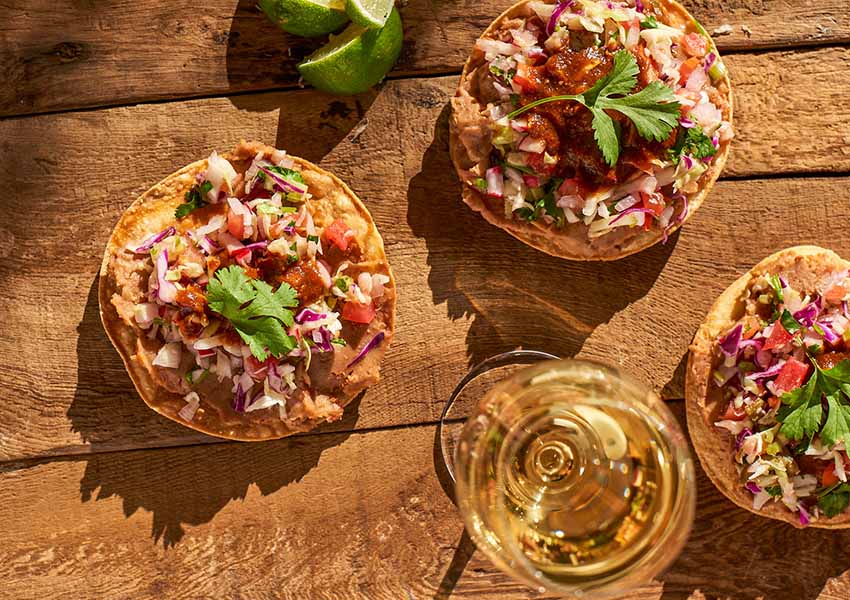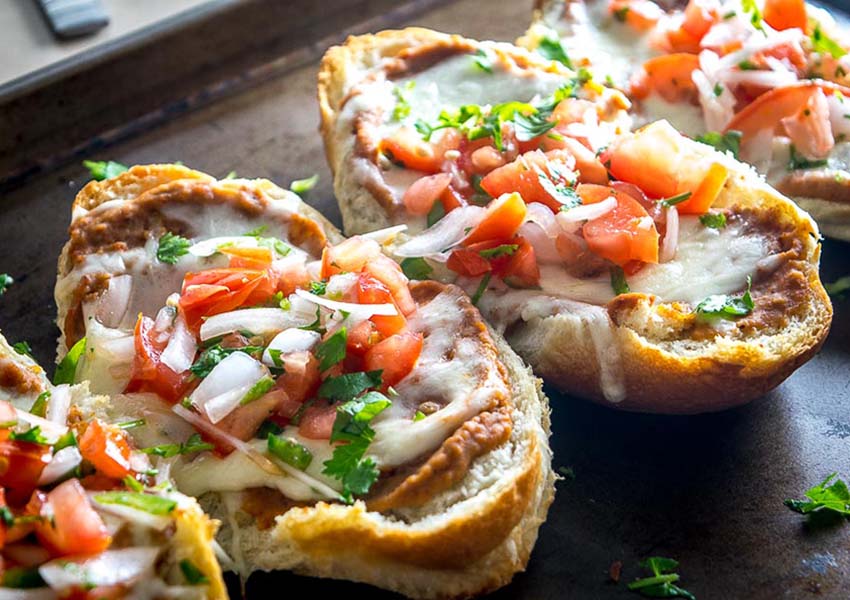Had I ever even noticed, much less eaten, refried beans before I moved to Mexico? I think not. At restaurants, I always opted out, and I never bought a can of what I disdainfully thought of as a lard-filled throwaway that had no place in my pantry (or cooking).
Well.
Nowadays, my love of refried beans is a quiet secret I usually keep to myself. To me, they’re absolutely delicious; when I make them at home, I find myself licking the spatula as though it’s loaded with cupcake batter. (And, yes, I do that too.) But many expats I know don’t share my affinity for frijoles refritos — or, God forbid, frijoles puercos — for one main reason: the fear of lard.
I find this fear kind of a random parameter, and I have to ask those people: Do you eat bacon? How about the crunchy, yummy skin on a perfectly roasted chicken? Or the crispy fat on the edge of a grilled pork chop? Please. Come on, now. Manteca, i.e., lard, is a perfectly acceptable form of fat when used and eaten in moderation. (In the words of one of my foodie friends: “I have no problem with any kind of rendered fat.”)

Lard is what gives most tacos, burritos and quesadillas that shot of umami, the “essence of deliciousness.” I hate to break it to you, but chances are, even that vegetarian papa loca you love has been drizzled with a bit of manteca.
Refried beans are a cheap, simple protein powerhouse. They’re great for breakfast, as an accompaniment to eggs-any-style, scooped up with corn or flour tortillas. They’re an essential part of a mollete (perhaps the Mexican equivalent of a PB&J), spread onto a toasted bolillo (a fluffy sandwich roll) and topped with melted cheese, jalapeños and salsa verde or pico de gallo. Let us not forget nachos, tacos, burritos, quesadillas … the list goes on and on.
To make this dish, I always start with dried beans cooked overnight on my Instant Pot’s slow-cooker setting. (Can you use canned beans? Sure.) Personally, I like slow-cooked beans better than those cooked in a pressure cooker. After so many years of bean-eating, I’ve settled on yellowish, buttery peruano beans, also called Mayocobas, as my favorites. They cost a few pesos more, but the flavor and texture are worth it to me.
My tastes are simple, and usually, I just add some salt and maybe half a veggie bouillon cube to the beans as they cook. You can add more flavor with chopped onions, canned adobo chiles, pickled jalapeños, minced garlic, a teaspoon or so of ground cumin, coriander or red pepper flakes.
Once they’re thoroughly cooked and tender, I use an immersion blender to process them until smooth. (Another option is to mash them in the pan for a chunkier version.)
Now comes the “refrying” part: the bean purée is basically sautéed in corn oil (for flavor) or lard or bacon drippings (which makes them frijoles puercos) until the flavors merge and the texture changes. You can use butter, but I wouldn’t advise it; butter adds a flavor that just doesn’t fit well with the rest of the dish.
Basic Refried Beans
- 2 cups unsoaked dry peruano, black or pinto beans (or whatever kind you like)
- 2 quarts water
- 1 heaping teaspoon salt
- 3 Tbsp. corn oil, lard, bacon or sausage fat, etc.

Put everything in your slow cooker. Cook 10½ hours on high. This will yield about 5½ cups cooked beans with a little liquid.
Separate 2½ cups cooked beans and liquid; blend with immersion blender, regular blender or food processor till smooth. Heat 3 Tbsp. corn oil (or another kind of fat, but not butter as it will burn) in a large nonstick skillet over medium-high heat. Dump in blended beans; spread to edge of pan and, using a silicone spatula, stir, stir, stir.
Reduce heat to medium; continue stirring almost constantly, using the spatula to push the beans from the edge into the center. After about 10 minutes, you will suddenly see the texture change; the surface will start to look dry, and the bubbles will be bigger and dry-looking. At this point, stay close! All of a sudden, the mixture will be thick and done.
Remove from heat. Serve immediately with your favorite dish or cool, store and refrigerate in a sealed container for up to a week. Refried beans can also be frozen.
Classic Molletes
No need to heat up the kitchen; these can easily be made in a toaster oven.
- 2 cups refried beans
- 1-2 cups shredded cheese, like Chihuahua or mozzarella
- 3-4 bolillos (sandwich rolls)
Cut rolls in half. On a baking sheet, toast at 400 F (200 C) for a few minutes before adding any toppings.
Remove from oven, top each with a layer of beans and shredded cheese. Bake 3–5 minutes more until cheese is thoroughly melted. Top with freshly made salsa verde or pico de gallo and serve immediately.
Janet Blaser is the author of the best-selling book, Why We Left: An Anthology of American Women Expats, featured on CNBC and MarketWatch. She has lived in Mexico since 2006. You can find her on Facebook.
